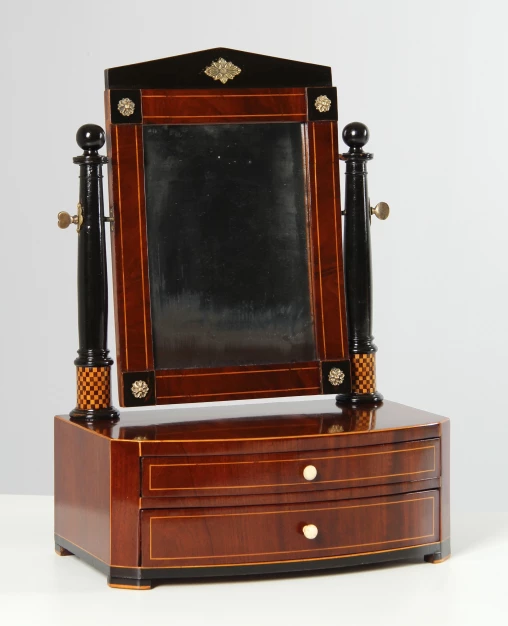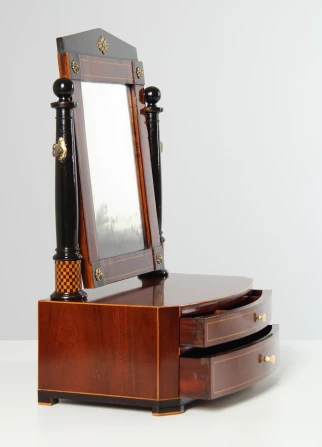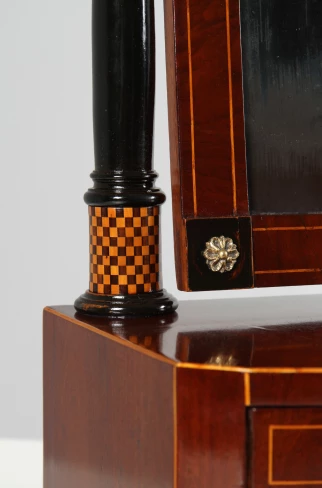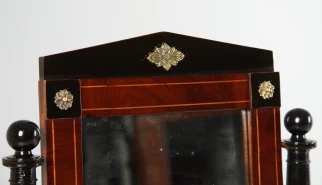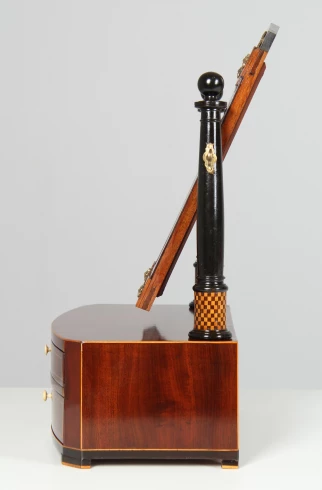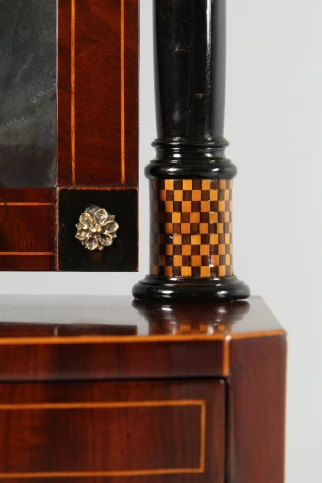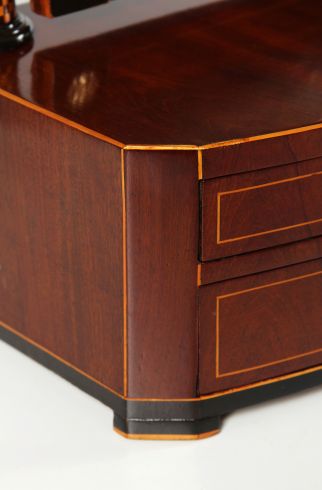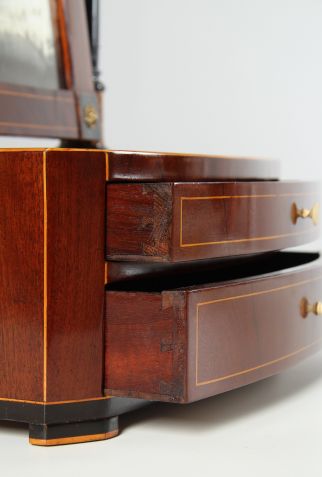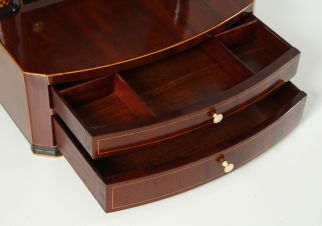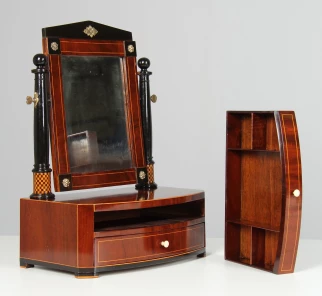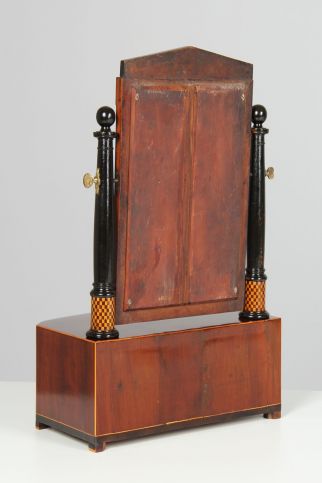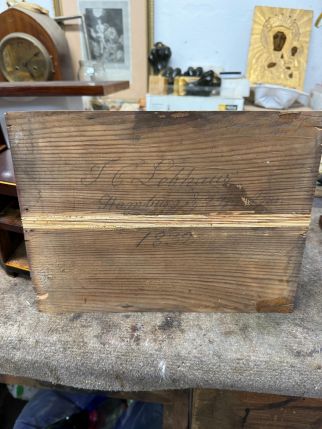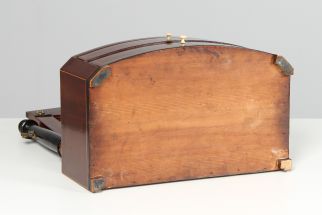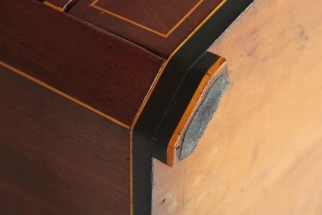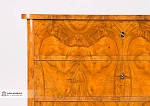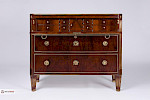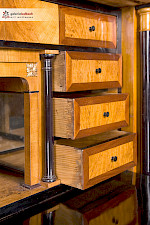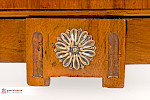Biedermeier make-up mirror - so-called Psyche
Northern Germany (Hamburg)
Mahogany, maple
Dated: 1832
Dimensions: H x W x D: 53 x 37 x 23 cm
Description:
Elegant and exceptionally finely crafted make-up mirror from the North German Biedermeier period.
Two-legged base with bulging front, standing on a plinth. The drawers, which were used to store smaller make-up utensils, are made of solid mahogany, the upper drawer has a compartment division.
The elaborate workmanship with maple thread inlays on all corners and edges and also on the drawer fronts is worthy of special mention.
Please take a look at the photo, which shows the underside of the object. To ensure that no end edges are visible on the feet, they were not simply sawn out but assembled from mitred pieces. This is attention to detail par excellence.
The two-column structure with the swivelling mirror is also impressive. The bases of the bulging columns with spherical capitals are marquetry-marked in chequerboard decoration. Although the original mirror glass is faded at the edges, in my opinion it is usable and absolutely worth preserving. The attached video clearly shows the condition of the mirror glass. It is framed by wooden surfaces and corner rosettes on a blackened background.
A flat triangular pediment forms the upper end.
During the restoration work, the signature of the builder on the inside of the back wall of the mirror was noticed: J C Lebhaus - Hamburg - 1832. There is also a restoration note from Lüneburg 1934.
Interesting facts:
Mirrors like the one offered here are also known as "psyche". The term originally refers to large standing mirrors and comes from the novel Les Amours de Psyché et de Cupidon by Jean de La Fontaine, in which the heroine Psyche supposedly looks at her reflection in full size. The 1838 Damen Conversations encyclopaedia mentions a standing mirror in the dressing room and refers to it as "Psyche".
Condition:
Restored and hand-polished with shellac.
Price: 1700,-€
Article found under: Other facility
Add to shopping cartVideo Biedermeier make-up mirror
Also interesting
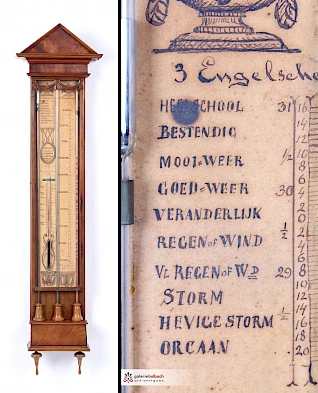
Antique barometer
Dordrecht (Netherlands)
Mahogany, paper, mercury
dated: 1852
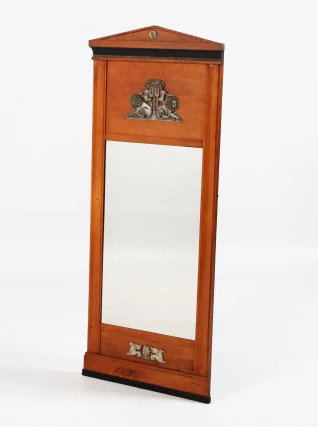
Biedermeier pillar mirror
Central Germany / Thuringia
Cherry
Biedermeier around 1825
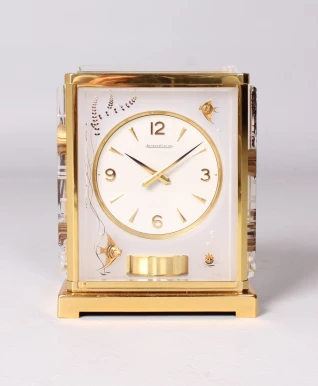
Jaeger LeCoultre - Atmos "Poissons
Switzerland
Brass, plexiglass
Year of manufacture 1962
